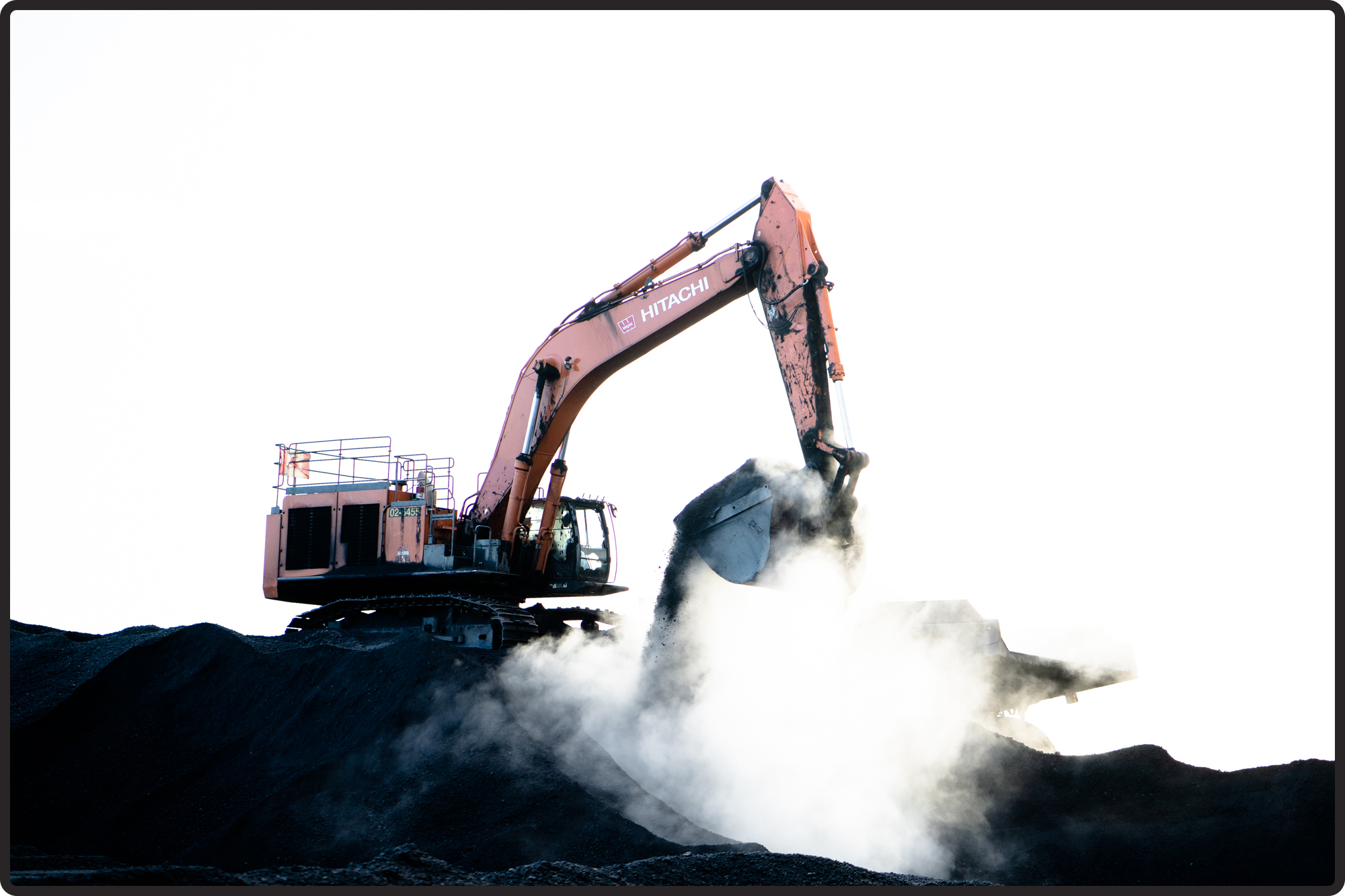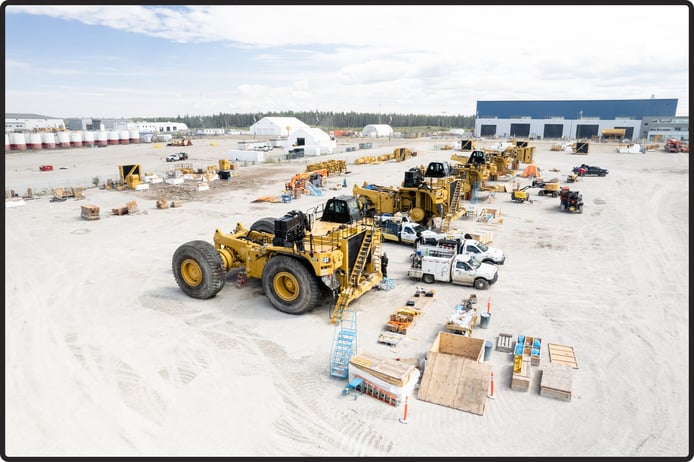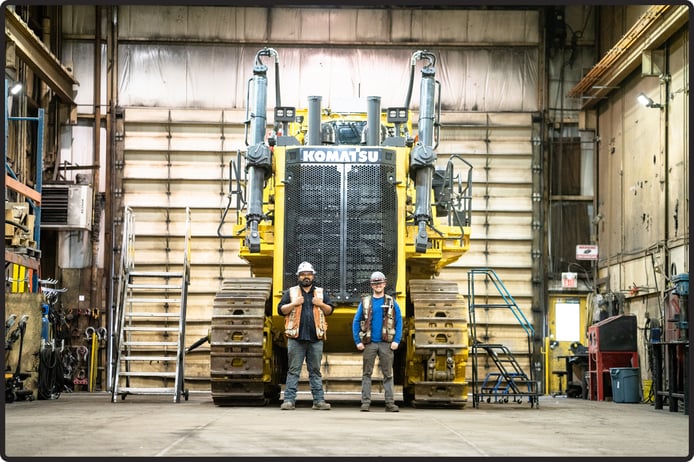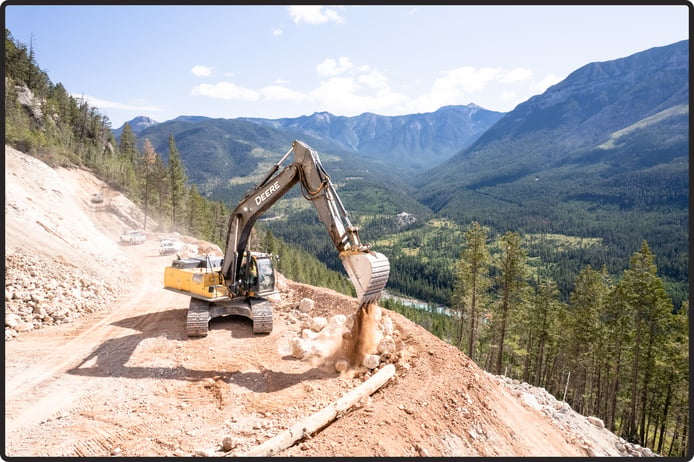
BuildWitt Canada Part 2
Welcome back! You may recall that I only got through the first day of my Canadian trip if you read part one. While I could write 50 pages on the remainder of our trip, I'll keep this one brief? We'll see...
Day Two
Day two was the one I was looking forward to most because we visited a real oil sands mine! Since I'm weird and love the mining industry, I've wanted to see an oil sands mining operation for years. It was a dream come true. Yes, I know most 20-somethings have different dreams…
We met with our friend Alan at Morgan Construction, a mine services contractor, first thing in Fort McMurray and headed north. After a brief stop at the security office, we had our badges, and we drove through the gates of the mine, one of the world's largest mining operations.
Our first stop was to a previously mined portion of the mine where Morgan crews were reclaiming the land. As the processing plant transforms oil sand into crude oil, a byproduct is piles of petroleum coke. Imagine a black, lightweight pumice stone if you haven't been around coke before.
Morgan was loading it into trucks for hauling to the reclamation area. Hot material + a cool morning meant steam filled the air after every bite of the Hitachi 870 excavator. An equipment photographer's dream!

100-ton trucks hauled the material to an awaiting D8, where it was spread and left to settle. Morgan was nearly at grade, and crews will soon cover it with topsoil and revegetate the area. Within a decade, no one will know it was mined.
The second portion of our tour led us into the mine, where a Morgan 6015 excavator was loading 100 and 200-ton trucks. After a thirty-minute drive from the front of the mine, we descended into the pit. 400-ton ultra-class trucks hauling oil sand passed us every few seconds.
The 6015 was digging oil sand, and I finally saw the precious material up close. Imagine a bowl of beach sand mixed with a quart of motor oil. The density of it blew my mind.
Day Three
Our third day brought about a tour of the largest Caterpillar dealer in the world—Finning Cat. Arranging this visit was dumb luck. I reached out to the right person on LinkedIn a few weeks before our visit, and miraculously they connected me with the right people!
Most Caterpillar shops are big, but Finning's Fort MacKay shop was on a different level. Rather than the usual D8 undercarriage work or D6 rebuild I see in the states, most of Finning's bays had 797B haul truck rebuilds.

We learned about the 797 rebuilt process, which takes about 12 weeks. Most trucks have about 80,000 hours on them before a rebuild, and after they roll out of the shop, they're ready for another 80,000 hours of service. It's a testament to not only the truck build quality but the capabilities of the Finning technicians and dealership.
We then walked through the track shop, which was chock full of dozers ranging from D6s to D11s. Since the sand is so abrasive, dozers receive new undercarriages around every 1,500 hours. Not only do they burn through undercarriages, but Finning can also rebuild a D11 from the frame up (usually a three to four month process) in less than a month.
Finally, we left the shop and crossed the street to an additional yard Finning rented for all the new machine assemblies. And since we were in the oil sands, it wasn't small stuff.

Technicians were busy assembling five 797F haul trucks with a few more sitting around in wooden crates. The trucks arrive via 7+ semis (not including the tires, which are $78,000 each) and require over a month of assembly. Once complete, they're tested and transported whole to the awaiting mining operations, where they live out their lives.
I'd only ever seen one 797 before this visit, and it's the truck Caterpillar has at their Tucson facility, not a production machine. To see this many new 797Fs in one spot was an equipment nerd's paradise.
Day Four
We began downtown Calgary, where Wilco Southwest worked along the river to prevent future flooding. With small excavators, a D3 dozer, and skid steers, it was much more my speed. Enough with the mining equipment…

The most unusual aspect of the job was a rock cofferdam they built in the existing river to offer the piling crew a place to set up their rig. With the piles for the new wall driven, Wilco's crews were removing the rock to restore the river to its existing condition. Not every day do you see an excavator working in a river with skyscrapers next door!
Next, we drove to see Blue-Con install utilities. Typically in the states, each utility gets a dedicated trench. In Canada, they often lay everything simultaneously. To accommodate three separate utility alignments, Blue-Con had a monster 60-ton excavator digging ahead with a team of pipelayers juggling the water and sewer lines.

Not only did we see pipe, but Blue-Con gave us a helicopter ride from their office to a farm outside of town for lunch. Why not?
Finally, we left Calgary and headed to Sparwood, BC, through the mountains. We met up again with my friend Alex and headed to the local Komatsu shop to check out something special—the second ever 475-8 super dozer, also the world's biggest production dozer.

What a beauty...
Day Five
We were deep in the Canadian Rockies, about an hour north of Cranbrook, BC, with Mackay Contracting. There was a lull in the work due to a few external factors, but it was among the most beautiful job sites I've ever visited. Mackay's crews were developing a new mining operation, with miles of new haul roads and plenty of overburden to remove.
Long story short, some folks in the area were upset at our blasted picture-taking and raised hell. We don't like drama, so we left and drove three hours to our next destination. We arrived, ready to document the mine reclamation work Mackay was performing.

Long story short again, we're asked to leave. No photos allowed!
I could go on a rant here, but we're already too far into this newsletter for that. In short, until the mining industry lightens up and decides to tell its story, it'll continue to have enormous hiring challenges and environmental pushback. But then again, what do I know…
Thanks for tuning in again this week, and we'll be back next week with our typical newsletter programming! (maybe)













